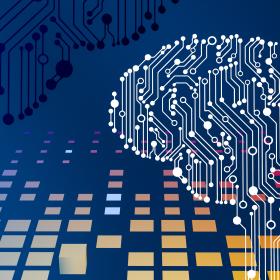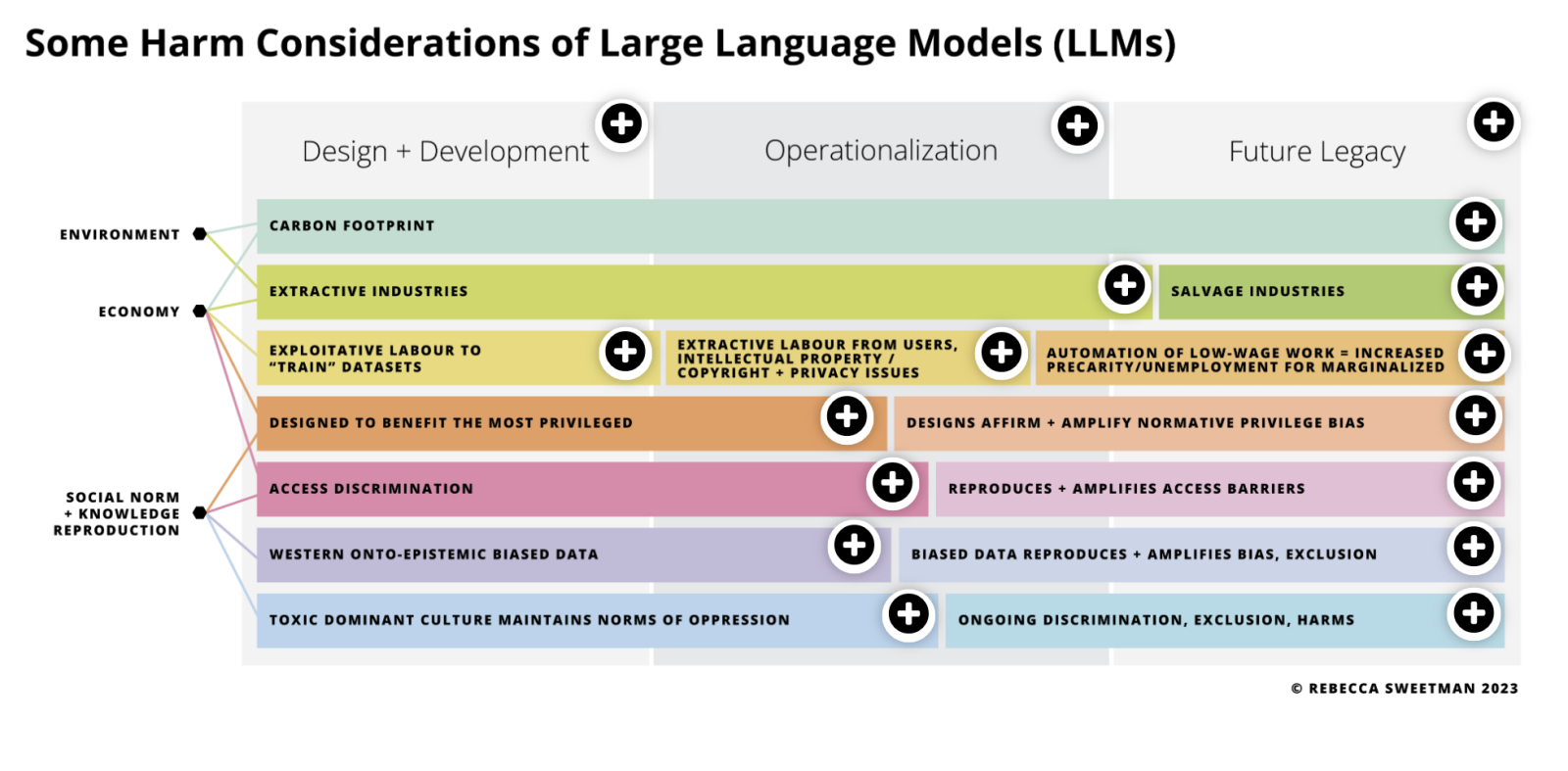< Contact the CTL >
Please feel free to contact the CTL with feedback, questions, and suggested resources around generative AI for teaching and learning.

"5 Things to Know About ChatGPT"
For a quick overview of a Generative AI tool commonly used in higher education, see this CTL resource that was initially created at the launch of ChatGPT and is updated periodically with current resources.
Definitions
What is generative artificial intelligence?
In the context of this guide, generative artificial intelligence (AI), or GenAI for short, refers to tools that use "large language models" (LLMs) that can produce text, audio, images, or video, based on the given input data, such as a question or prompt. Microsoft Copilot, UT-Austin's approved GenAI tool, is one of many such tools that use generative artificial intelligence to produce text. As a user, you can enter questions, submit prompts, and the tool will provide responses.
As outlined by the Center for Teaching and Learning at Queen's University, the following use cases for generative AI Models may include:
- Analyze, improve, and summarize text
- Write computer code or LaTex
- Translate text from one language to another
- Create new ideas, prompts, or suggestions for a topic or theme
- Generate text with specific attributes, such as tone, sentiment, or formality
At first glance, it may seem that these tools function very similarly to humans when it comes to thinking, reasoning, being creative, and communicating. However, there are still several things that they simply cannot do. For example, it cannot remember facts and will often output "hallucinated" factual errors in a very convincing way.
In higher education contexts, these tools can be used for the pedagogical or research-based tasks to which they may be best suited, ensuring that the human use of the output of these tools is the final arbiter of meaning. As the MLA citation for ChatGPT makes clear, ChatGPT, Copliot, and similar tools are not "authors" and do not possess human agency, meaning that they are unable to weigh reasonable alternatives or think logically.
References
Crouse, M. (2024, June 24). Generative AI defined: How it works, benefits and dangers. TechRepublic. https://www.techrepublic.com/article/what-is-generative-ai/
UNC-Chapel Hill Writing Center. (2024, July 15). Generative AI in Academic Writing – The Writing Center • University of North Carolina at Chapel Hill. The Writing Center • University of North Carolina at Chapel Hill. https://writingcenter.unc.edu/tips-and-tools/generative-ai-in-academic-writing/
What is Generative Artificial Intelligence (AI) | Centre for Teaching and Learning. (n.d.). Centre for Teaching and Learning, Queen's University. https://www.queensu.ca/ctl/resources/educational-technology/generative-ai-teaching-and-learning/what-generative-artificial
Research into the implications of using generative AI tools in higher education has started to emerge. In 2023, a survey was conducted on the use of chatbots and other AI tools among groups of students in Sweden. The majority of students reported positive experiences in using these tools and believe that they make the learning process more efficient. At the same time, more than half of the students express a concern about the impact of chatbots on future educational experiences, but are less concerned about other AI-based language tools. More than sixty percent of students believe that using chatbots during exams is cheating, but the majority of students are against a ban on AI-based tools in education. Here is a brief summary of the survey.
As reported by the Daily Texan at the University of Texas at Austin, UT students demonstrate a similarly mixed understanding of the benefits and challenges posed by the use of these tools. Mechanical engineering freshman Simon Gross discussed how he has benefited from using ChatGPT, but also provided insight into certain ethical considerations around ChatGPT. “I think the main, best ethical use of ChatGPT is for generating ideas,” Gross said. “I think other ways that it’s pretty useful is you could say, create a template for an email … you’re not asking it to write the email. You’re asking it to help you write the email.”
“You attend college for a reason, and it’s not just to complete your assignments,” Gross said. “If you’re getting ChatGPT to write your essays and emails for you, you’re not becoming a better student. While ChatGPT might be able to do a lot of things for you, it’s still important to learn how to do those things for yourself.”
The emergence of new and accessible AI tools has different implications for different subjects and disciplines. It is therefore important that disciplinary-specific and professional communities assess the use of such tools in their subjects and areas of study. Legal frameworks, regulations for plagiarism and cheating, and for citing sources must be respected.
Connecting university learning and professional expectations
Aligning classroom-based uses of generative AI tools with disciplinary-specific skills and the expectations of professional communities can contribute to how and to what extent these tools can be used in teaching and learning. Indeed, connecting college performance to career expectations is a powerful argument for the exploration of generative AI tools with students.
Implications for assessment
Assessment is clearly a major concern when it comes to the use of these tools. At the extremes, on the one hand, there is "no use" of generative models, and on the other, "extensive use", where the generative model has produced the entire content. Depending on which line you take in your own subject, gray areas may emerge as to what is acceptable use. If you suspect your students are using these tools in an inappropriate way, you may contact Student Conduct and Academic Integrity in the Office of the Dean of Students at UT.
In the case of forms of assessment other than classroom exams, instructors could consider which tasks are given to students such that they cannot easily use generative models to complete the tasks.
In the short term, instructors can emphasize forms of critical reflection that bring out the students' points of view, make thought processes visible during course work, and which encourage the creation of something new. Assessment forms linked to various formats such as video, presentations and oral assessments, project work, portfolio assessments or assessment forms where students receive feedback along the way and improve their work can also limit the possibilities to areas that the instructor clearly indicates as acceptable.
In the longer term, instructors may wish to consider shifting their focus from a strict control of learning environments to encouraging the process of learning and thus exploring how these tools can be included to support learning.
References
Chaudhuri, T. (2023, February 16). Reconsider ChatGPT for academic use. The Daily Texan. https://thedailytexan.com/2023/02/16/reconsider-chatgpt-for-academic-use/
Malmström, H., Stöhr, C., & Ou, A. W. (2023). Chatbots and other AI for learning: A survey of use and views among university students in Sweden. (Chalmers Studies in Communication and Learning in Higher Education 2023:1) https://doi.org/10.17196/cls.csclhe/2023/01
What’s the future of generative AI? An early view in 15 charts. (2023, August 25). McKinsey & Company. https://www.mckinsey.com/featured-insights/mckinsey-explainers/whats-the-future-of-generative-ai-an-early-view-in-15-charts
GenAI CTL Workshops






